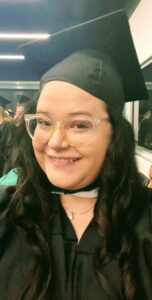
By Amy Heydlauff
The following is an interview with one of Chelsea’s innovative North Creek Elementary teachers.

Eric Robinson has been with Chelsea Public Schools for 15 years. In this interview, he addresses classroom innovation and changing educational expectations for students and teachers.
Q: Tell us about your classroom.
A: In some ways, my classroom is traditional. There is student artwork, a writing center, and a library with a wide array of books. I am also trying to address 21st century needs (modern learning) by having multiple screens where students can share work or I can share with them. We also have a wide variety of seating choices. There are tall tables with stools, traditional desks with “wobble-stools” and stability balls, tables that are low to the ground with cushions, cushioned benches, and other opportunities for comfort and choice.
Q: How does this classroom reflect your expected outcomes for your 2nd graders? What are they learning?
A: In our building, literacy is the main focus as well as foundational skills in writing, math, social studies and science. The big change is the amount of information and skill that needs to be acquired by an early age. It is much more comprehensive and substantial than when I was in 2nd grade 35 years ago.
Q: How did you acquire all the interesting seating you described?
A: Some of it I purchased. Some I used PTO funds to purchase and some was made for the classroom by a parent.
I struggled in elementary school because I couldn’t sit still. The structure of the classroom was traditional with a lot of seat work and eyes on the teacher. Now, there is much more collaboration and investigation going on in the classroom. I read an article about 10 years ago about students using stability balls and the positive effect it had on their attentiveness. I was hooked. I tried innovative seating to see if it would affect the way that students interacted, their learning styles and personalities. As I progressed, trial and error taught me that stability balls were great, but not for everybody. Now I have a variety of different furniture and classroom set-ups, always polling my students to see what they prefer. It is their classroom after all.
Q: You mentioned modern learning. What does that mean? Why is it necessary?
A: In the past, teachers were seen as the fountain of knowledge. Then, along came the Internet and it fundamentally changed the way that we interact and learn. There is a good possibility that the students in my classroom will have a job that hasn’t been invented yet. In order to prepare students for this future, there are new skills they must master. These include collaboration, sharing and acquiring information using technology, critical thinking skills, and developing problem solving skills.
Q: Your classroom is a model for innovation. How do you think that helps your students?
A: The flexibility it provides allows for a variety of instructional techniques beyond the traditional “teacher up front” model. I can teach small groups, allow students to investigate collaboratively, have partners work on a project together – whatever we can envision. Traditional seating is not flexible enough to allow for this. I also have a strong belief that the environment that students work in is critical to their feelings about learning. My environment focuses on the student and their choices rather than just my needs as a teacher. Students love this type of environment and the ownership it bestows. That translates to a healthy and vibrant classroom community.
Q: If you could design a perfect learning environment for 2nd graders, what would it look like?
A: I don’t know that there is a perfect environment. Some classes need more flexibility, while others may struggle with a less structured environment. The key is to find furniture, space and teaching methods that are flexible. An example of this would be if the teacher wanted to do collaborative projects. It would be great to have tables on wheels that could move around and fit together into different configurations depending on group sizes. I also think that multiple screens are a key. Currently most teachers are tethered to a design that requires students face the “front of the class”. With multiple screens, it allows for me to configure the classroom any way that I’d like. I wish you could see my classroom, though. The underlying design isn’t very flexible. Flexibility is the key.
Q: If you had a pre-designed, flexible classroom would you lose your opportunity to teach the kids about innovation?
A: Flexibility will expand opportunities for modern learning to occur. It would allow us to teach using innovative teaching strategies.
Q: How do you think you are changing the ability of your students to live in the real world, when they are grown?
A: Employers want an employee that is flexible, works well with others, thinks critically when making decisions, and solves problems when they arise. We need to lay the foundations for this right from the start.
Q: How do you know you are accomplishing flexibility, cooperation, critical thinking and problem solving?
A: The reason I know that my flexible environment helps to affect the outcomes for my students is that I collect data. My wife is a researcher and gave me the idea to start keeping data on my student’s soft skills (i.e. collaboration, critical thinking, etc.). I thought that was a great idea, so I started assessing students on these skills along with the traditional skills for our report cards. This data allowed me to see what I’d been feeling all along. A flexible learning environment helps to stimulate these soft skills as well as facilitate modern learning.
Q: What do you think kids need from teachers and home to be successful?
A: In some ways, students need what they have always needed, love, patience, and support.
Q: How can the community help support our students?
A: Just like I trust our local firefighters, chefs and architects to be experts in their fields, educators need the trust and support of the community as well. Chelsea has supported its schools and educators for as long as I’ve been here and I understand, as far back as people can remember. It’s part of what makes Chelsea a desirable destination for families.
The last thing I’d add is this. Learning environments should look and feel different than when many community members were in school, but these changes are not ‘fads’.
Modern learning and more flexible environments are part of the natural evolution of education.















